The document is a statement by artist Brandon Ballengée outlining his artistic practice which involves collaborating with scientists on biological research projects focused on amphibian conservation and declines. Through field surveys, public labs, and art installations incorporating actual specimens, Ballengée aims to raise awareness of environmental issues and inspire conservation efforts. His multi-component works employ photography, sculpture, and interactive projects to engage the public in scientific inquiry while questioning boundaries between art and science.

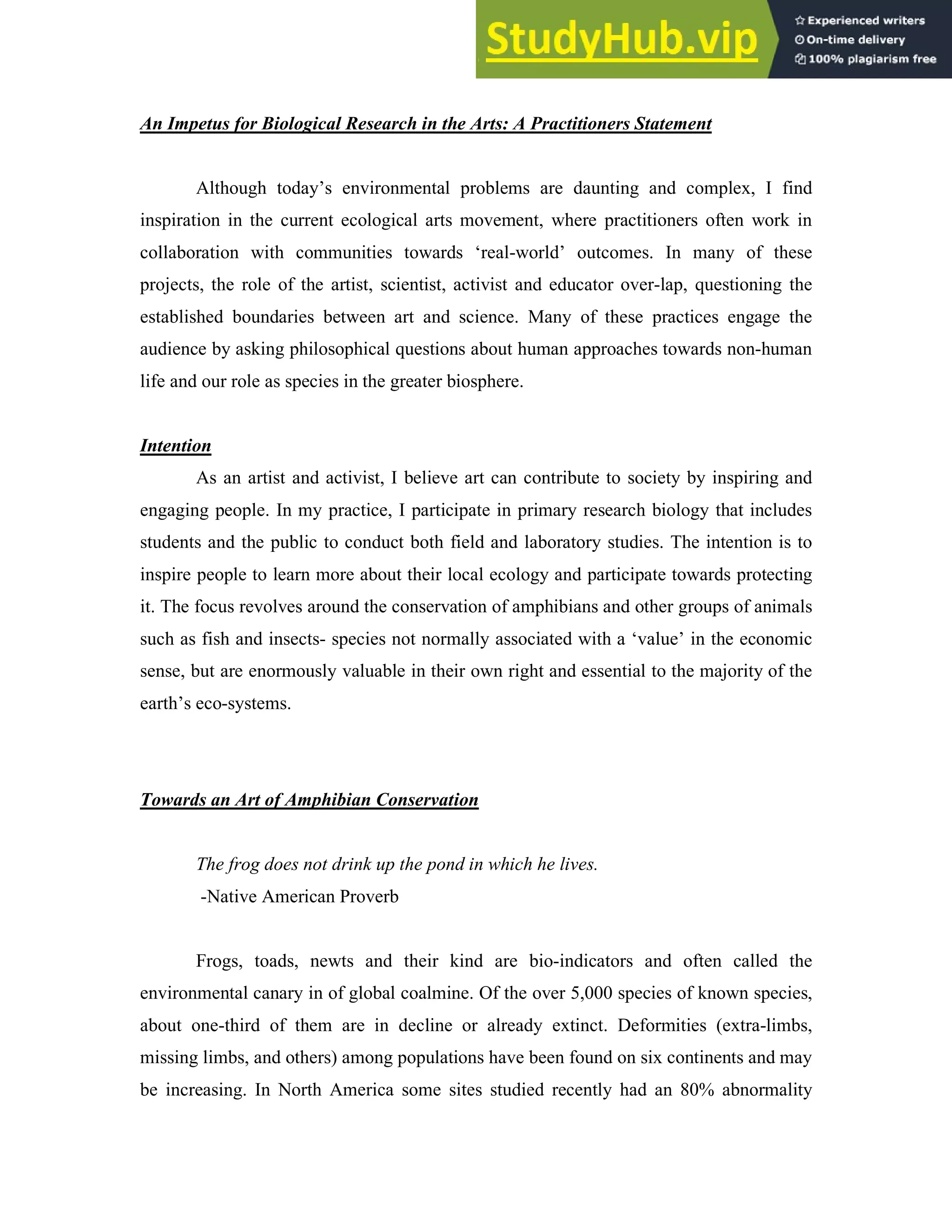
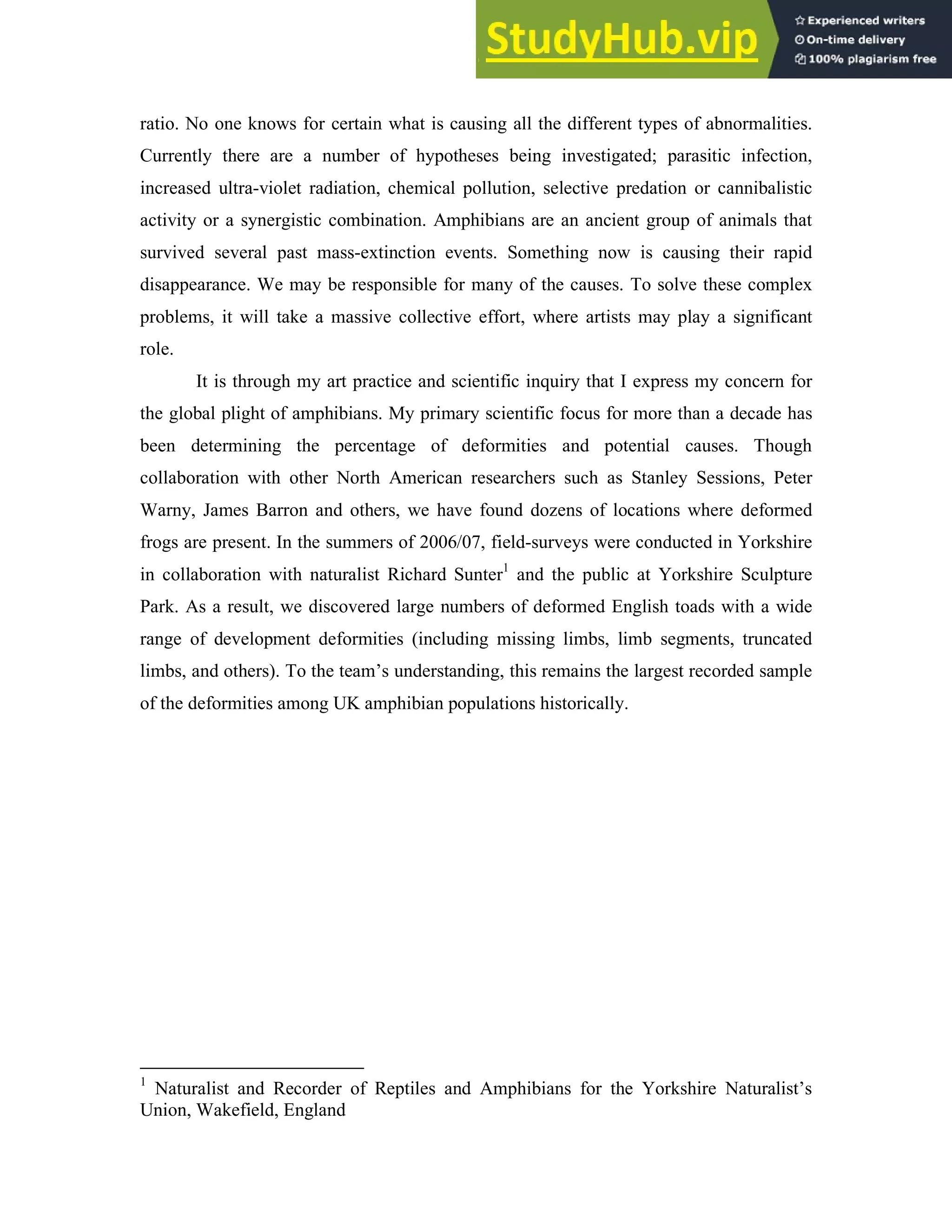
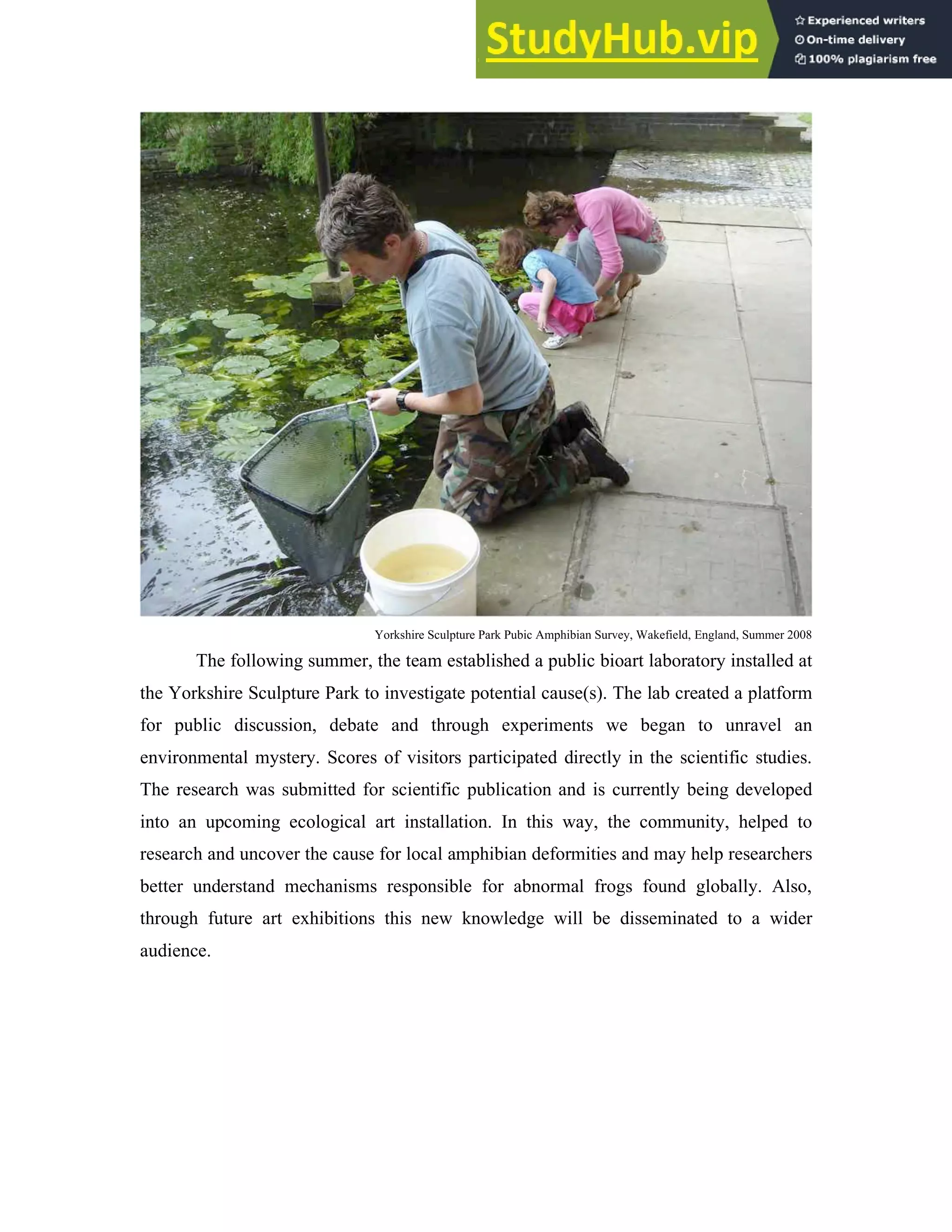
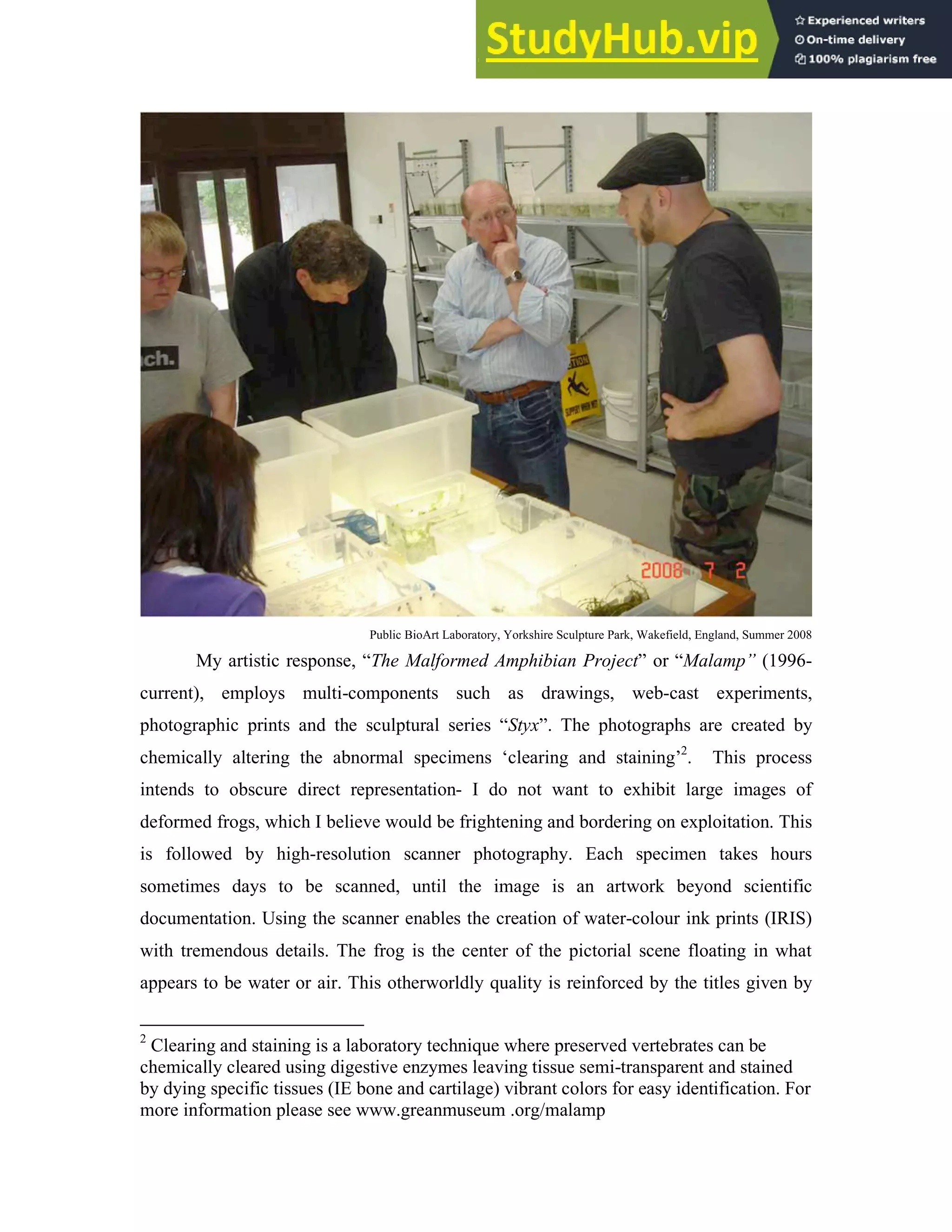
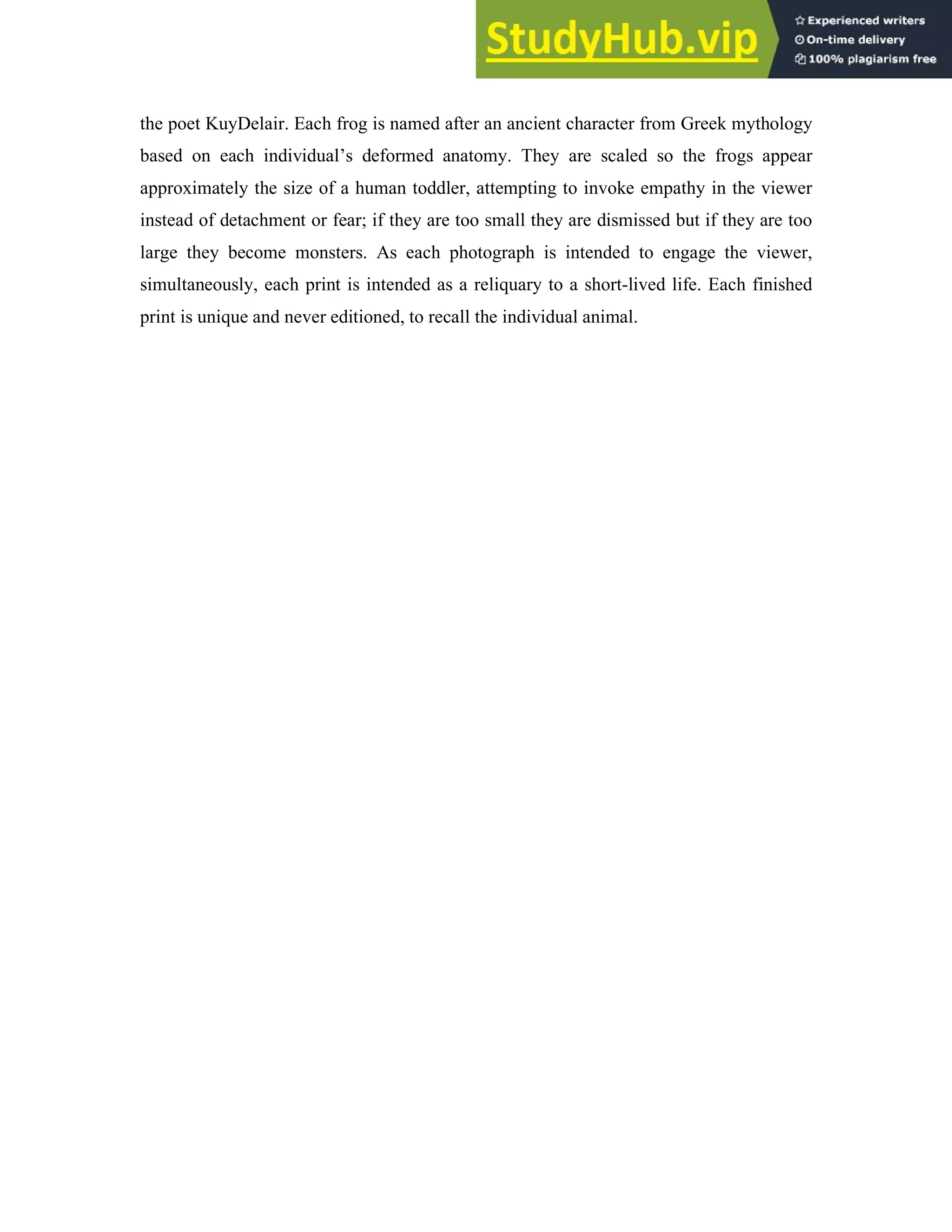
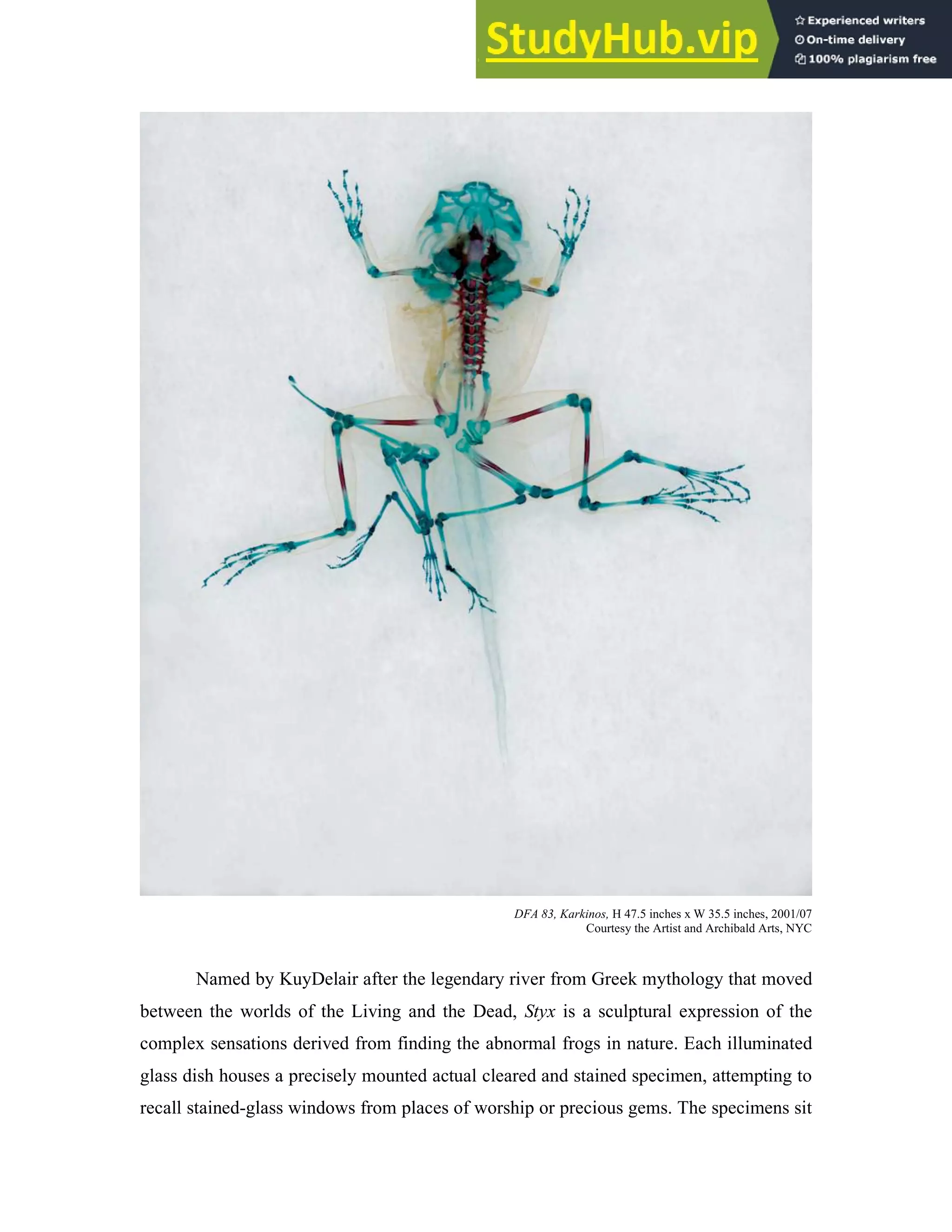
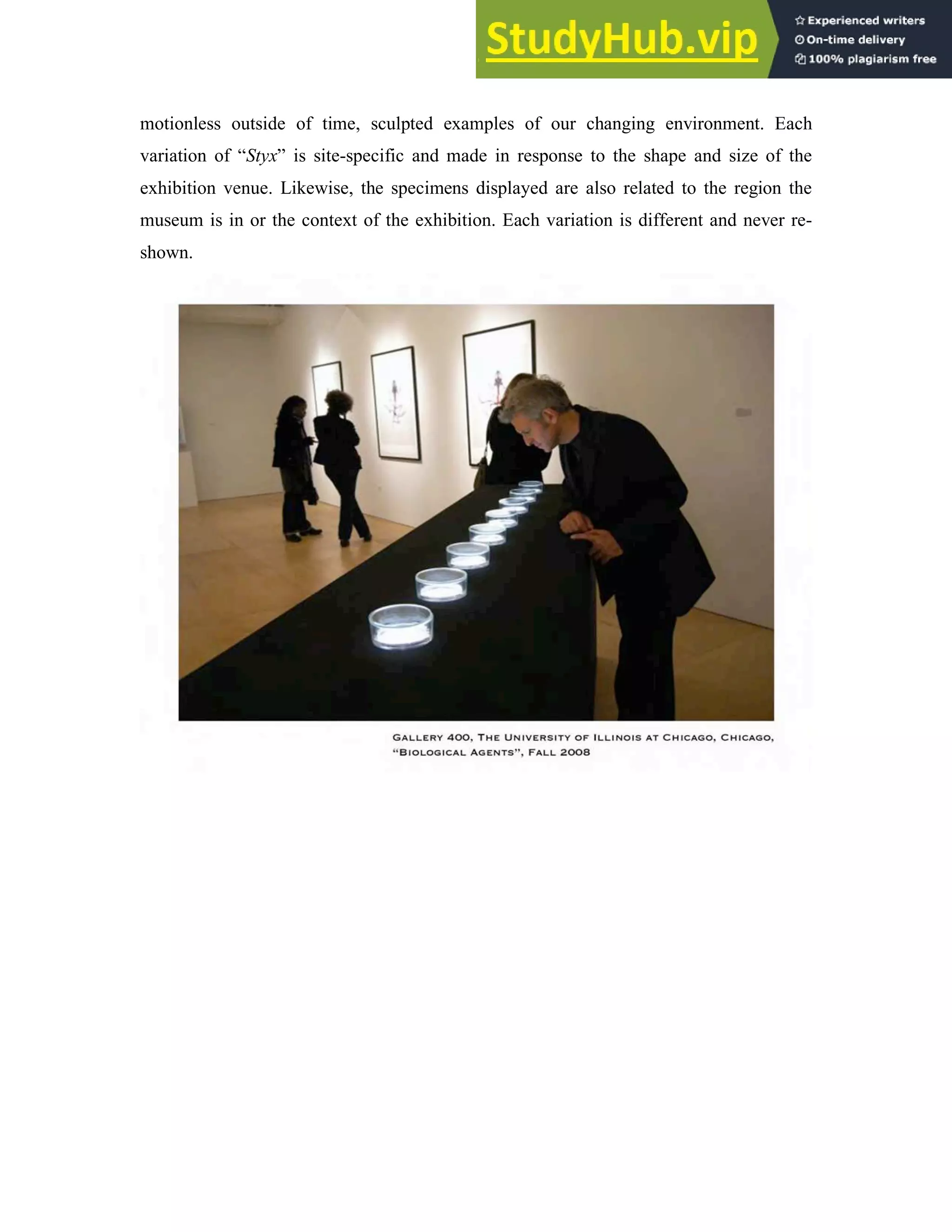
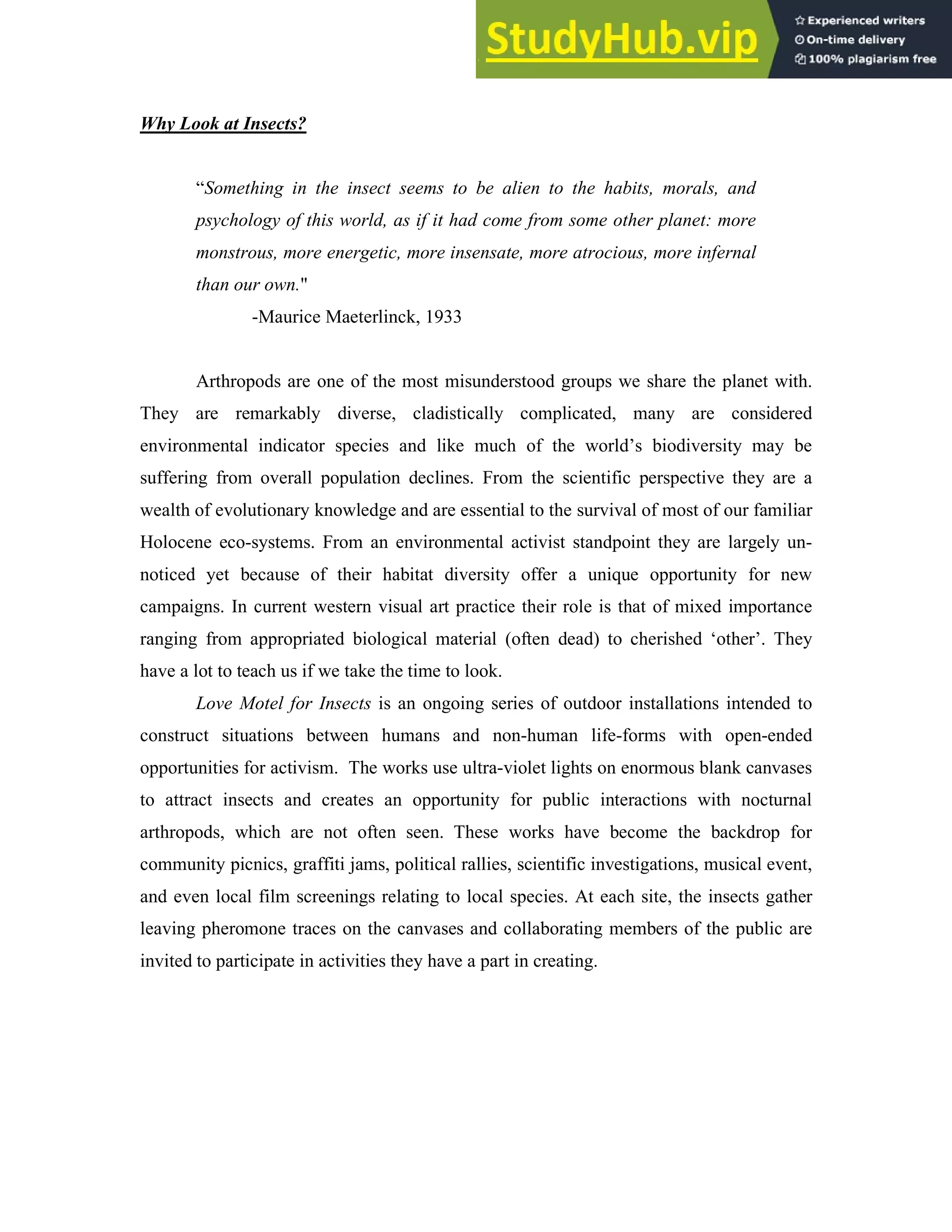
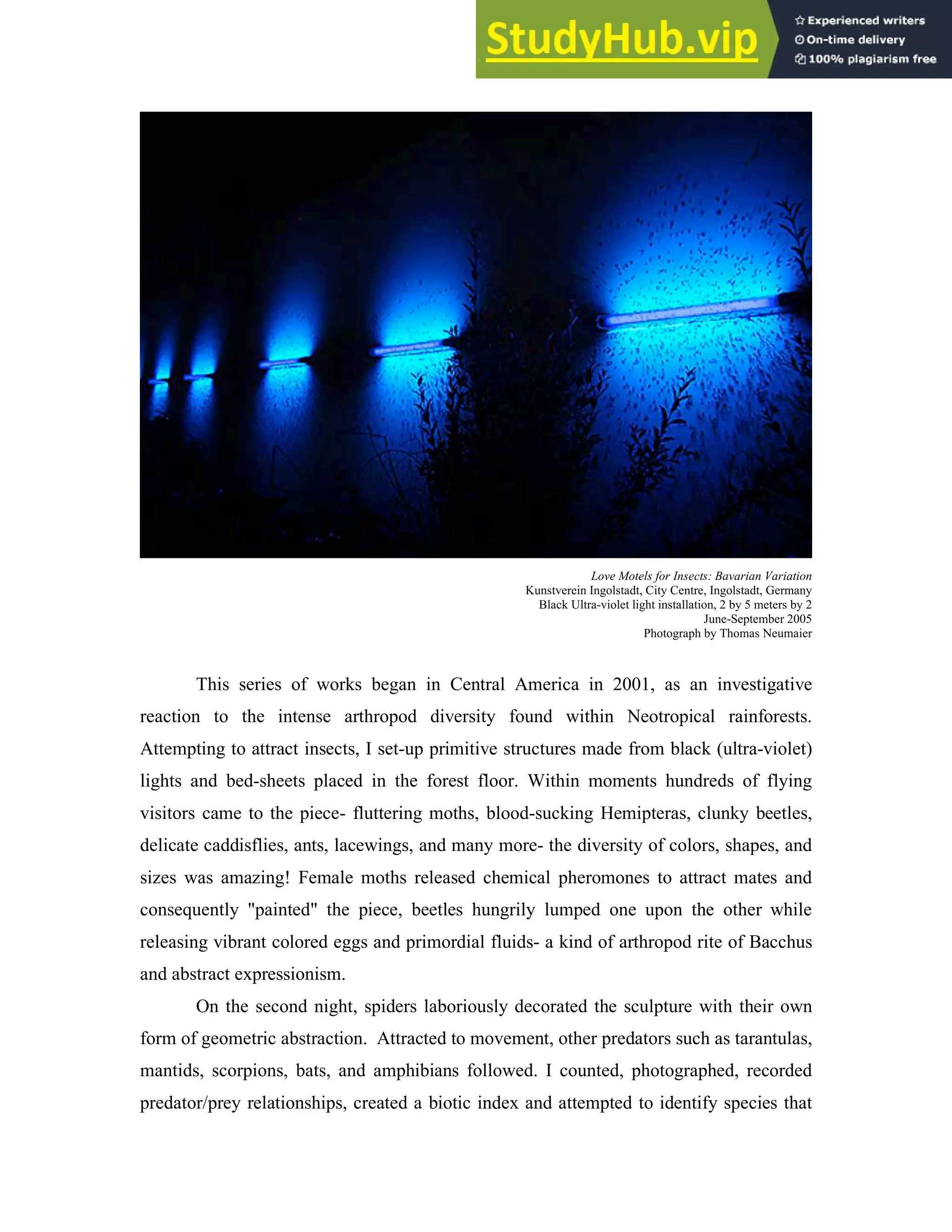
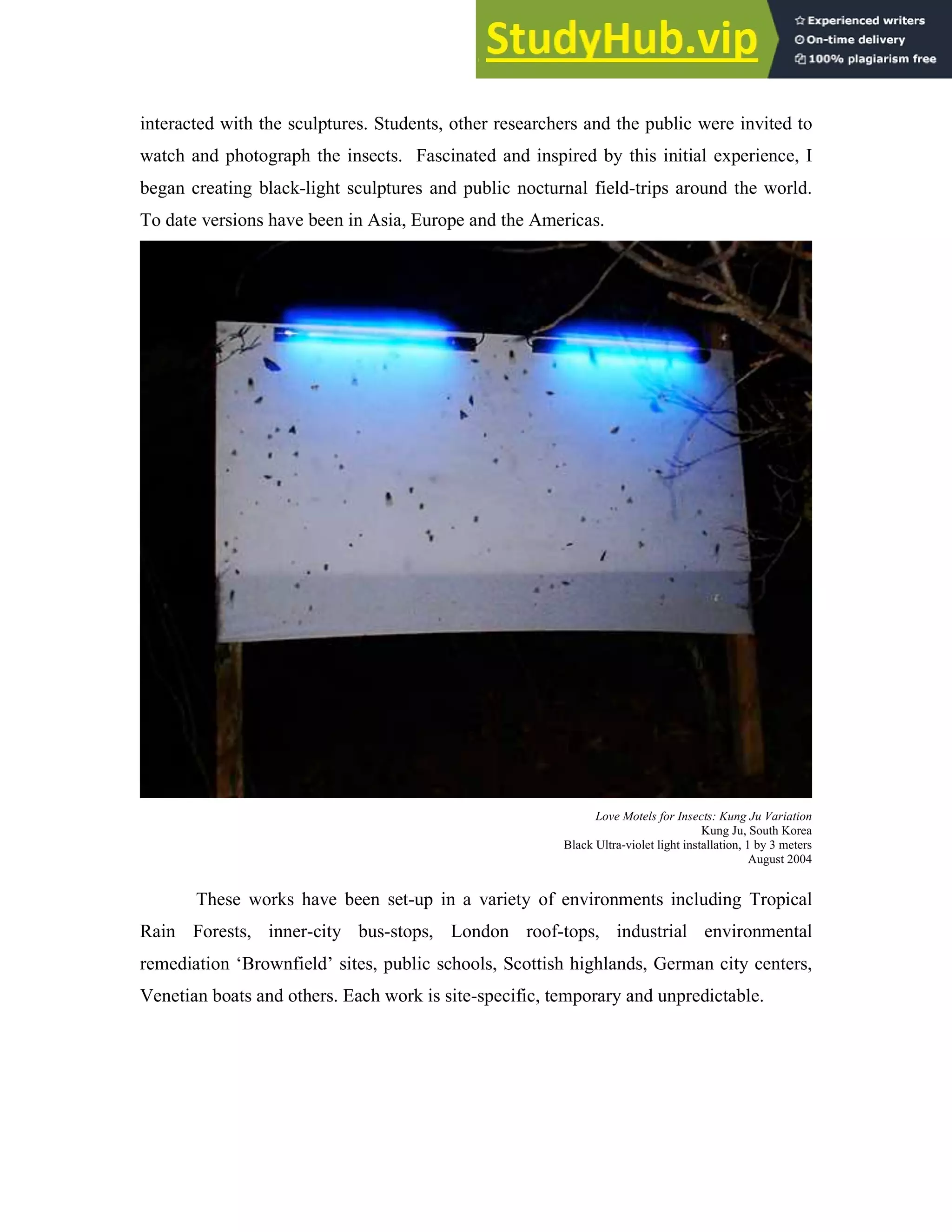
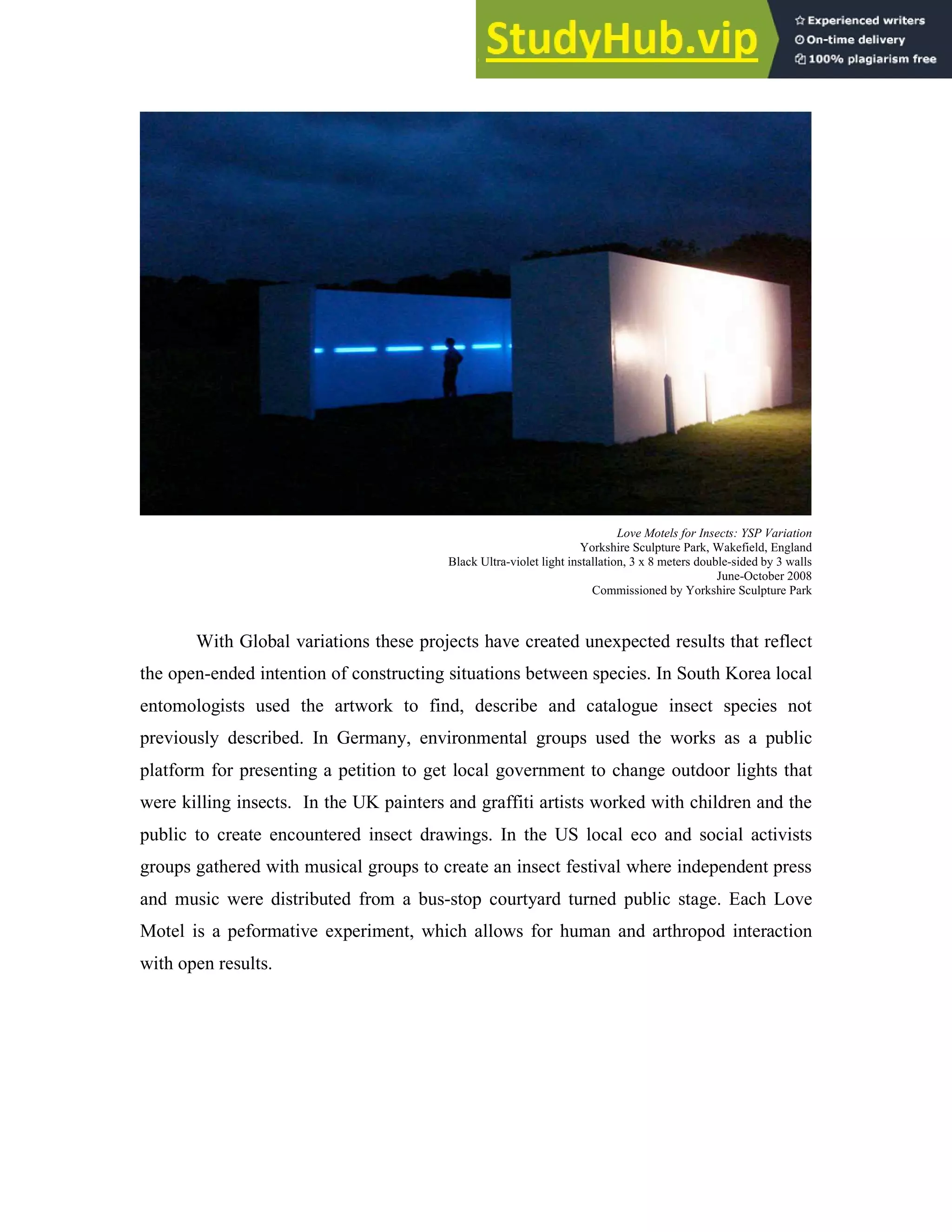
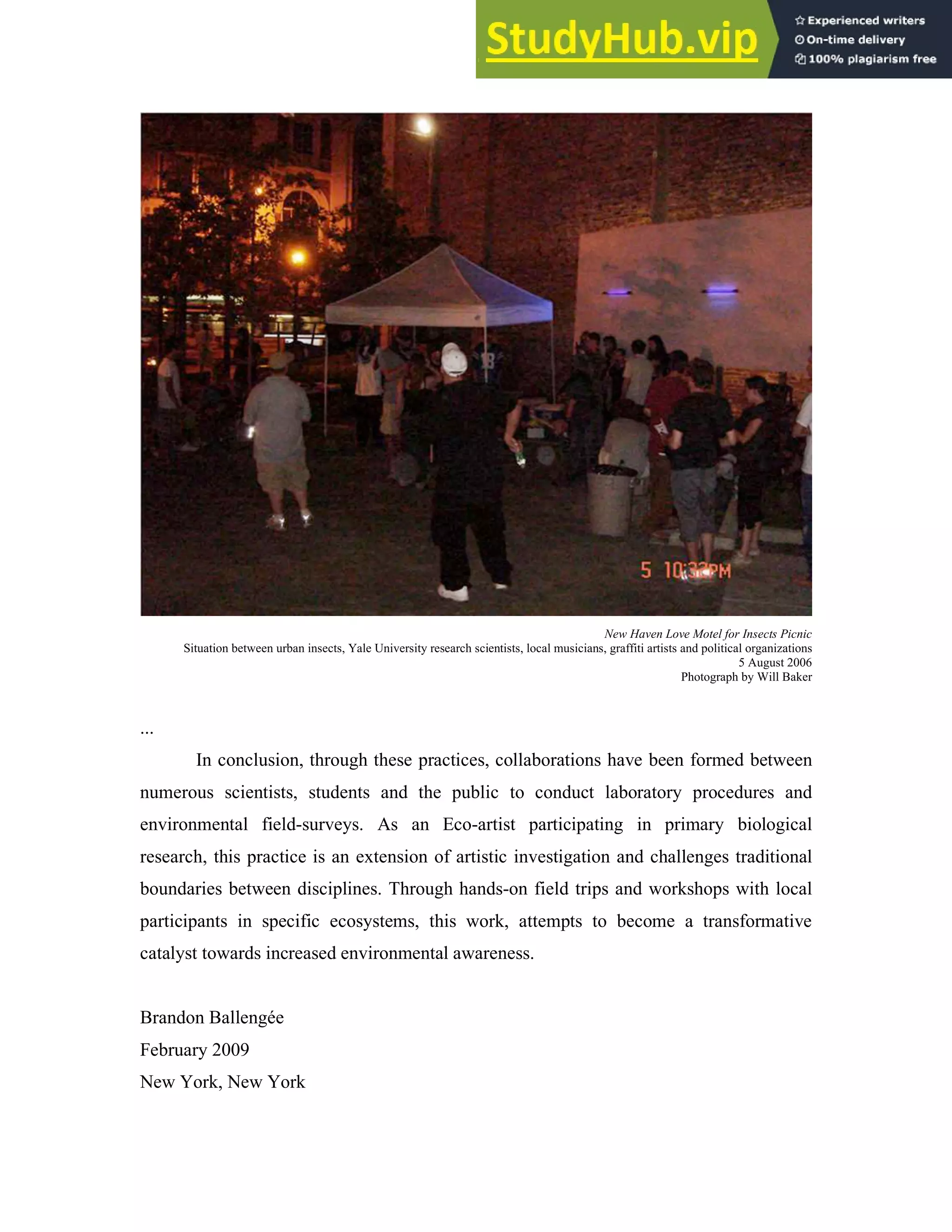
![Biography for Brandon Ballengée
Exploring the boundaries between art, science and technology, Brandon Ballengée
creates multidisciplinary works out of information generated from ecological field
trips and laboratory research. Since 1996, Ballengée has collaborated with numerous
scientists to conduct primary biological research and Ecological Artworks. A particular
area of study is the occurrence of malformation and global declines of amphibians.
These activities were outlined in “Ecoventions”, a book published in 2002 by the
Contemporary Arts Center of Cincinnati.
These projects have appeared internationally on ABC’s World News Tonight, BBC’s
Today Show and in Audubon Magazine, GENEWATCH, ESPACE Sculpture The
Guardian, MIT’s LEONARDO Journal, The Journal of Experimental Zoology, The New
York Times, Newsday, The New Yorker, Orion, Sculpture Magazine, The Sciences,
The Village Voice, and others. His work has been included in several books including
the new Art in Action: Nature, Creativity and our Collective Future, published by
Earth Aware Editions supported by the United Nations.
His Artworks have been exhibited in Australia, Asia, Europe and the Americas.
Recent solo exhibitions of his work were held at The Arsenal Gallery in Central Park
(NYC), The Peabody Museum of Natural History (Yale University), Archibald Arts
(NYC), and Kunstverein Ingolstadt in Ingolstadt, Germany. Upcoming solo exhibitions
are planned at the Williams Center for the Arts, Easton, Pennsylvania and the
Shrewsbury Museum in Shrewsbury (the birth city of Charles Darwin) in 2009. He
participated in the 2004 Geumgang Nature Art Biennale in Kung Ju, South Korea the
Waterways Project, which was installed at the 2005 Venice Biennale, Biennale for
Electronic Arts Perth 07 in Australia, film screenings as part of the 3rd
Moscow
Biennale in Russia, and Biotechnique at the Yerba Buena Center for the Arts in San
Francisco.
Ballengée has been awarded several artist grants including funding from the Puffin
Foundation, Maxwell Landau Foundation, Nature Conservancy, New York State
Council on the Arts, and others. He also has attended several artist/ researcher in
residency programs. In 2003, he was an artist in residence at the Natural History
Museum in London, Gunpowder Park and [space] in London in 2007, and the Société
des arts technologiques [SAT] in Montreal, Canada and the Yorkshire Sculpture Park,
in Wakefield, England in 2008.
In 2001, He was nominated for membership into Sigma XI, the Scientific Research
Society. His theoretical article, “The Origins and Application of Artificial Selection” is
included in the 2004 anthology "Biomediale" published by the National Center for
Contemporary Art in Kaliningrad, Russia. In January of 2002 and 2006, he co-taught
ecological art and neotropical evolution courses in Costa Rica for Hartwick College. In
addition, he regularly conducts ecology/ field biology/ genetics and digital imaging
workshops open to the general public at urban parks, zoos, petstores and fish
markets.
He serves on the board of directors for the Peoples Museum of New York. He
currently is a Candidate for a Ph.D. at the Hochschule für Gestaltung in Zürich,
Switzerland. A forthcoming book on Ballengée’s work will debut in 2009 published by
the Arts Catalyst, London England.](https://image.slidesharecdn.com/animpetusforbiologicalresearchintheartsapractitionersstatement-230806134716-6dba7559/75/An-Impetus-For-Biological-Research-In-The-Arts-A-Practitioners-Statement-14-2048.jpg)